Top 10 Fruits to Burn Fat You Should Eat Every Day
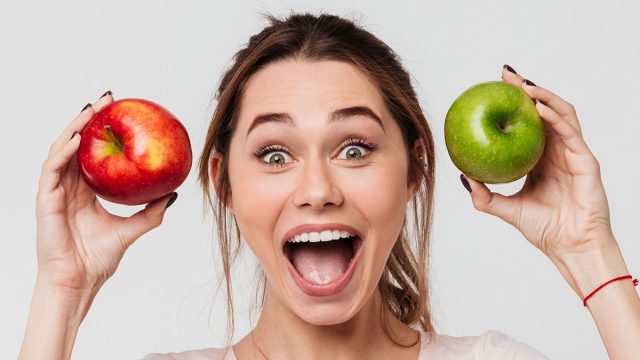
If you want to burn fat, lose weight, and improve your health, diet is a crucial factor. "No matter the variety of foods you eat, healthy diets should try to incorporate five servings of fruit and vegetables each day because studies have shown that this can improve overall health and lower the risk of serious health problems, such as obesity or type 2 diabetes," Rachel Lander-Canseco, RD, tells Keck Medicine of USC. "Don't be afraid of the sugar in fruit — welcome it. For some reason, people think that because fruits are sweet, they're off-limits. Fruits are high in fiber, vitamins, and minerals, so the benefits you get from them outweigh the glucose impact that you would get from, say, bread, white flour, or other carbohydrates."
Here are ten fruits to eat every day to help encourage weight loss healthily and sustainably, according to experts.
Tomatoes
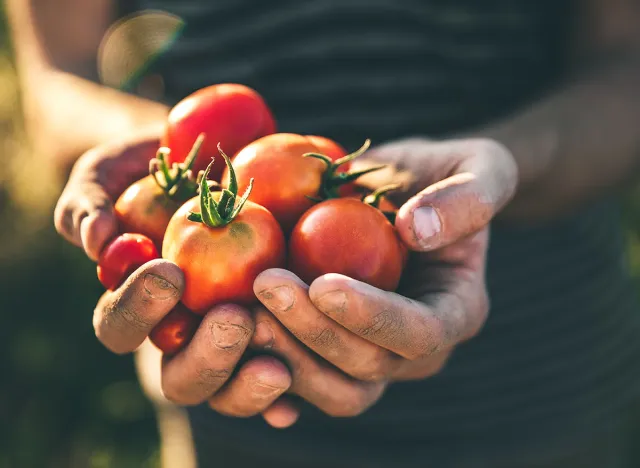
Tomatoes are delicious, versatile, and very good for you. "An average-sized tomato has just 22 calories, and a large one has 33 calories," according to Keck Medicine of USC. "Tomatoes are also considered an appetite-suppressant 'high-volume' food, which means they have high amounts of water, air, and fiber."
Strawberries
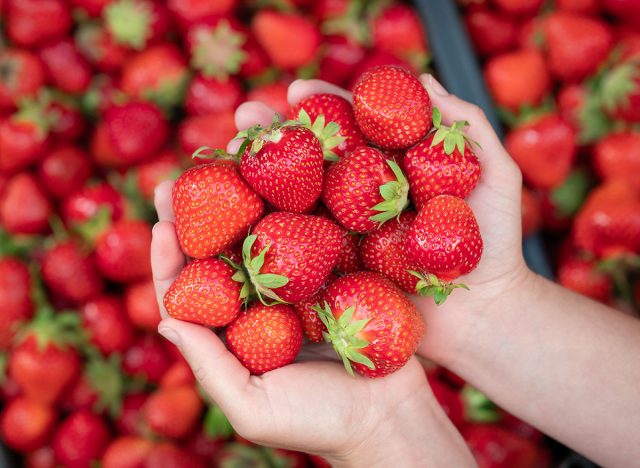
Strawberries are low in sugar and calories and packed with nutrients. "Berries, such as strawberries, blueberries, and raspberries, are low in sugar but high in antioxidants and fiber, making them perfect for satisfying sweet cravings when on a weight loss plan," nutritionist Aneequa Godart tells The Mirror.
Apples
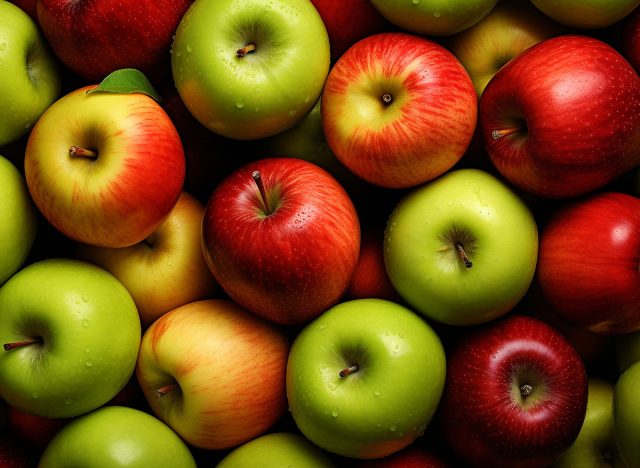
Apples contain lots of nutrients that positively impact health and fitness. "Apples are another great option for those looking to lose weight. They are rich in dietary fiber and pectin, which helps regulate your body's absorption of fat," Godart says.
Blueberries
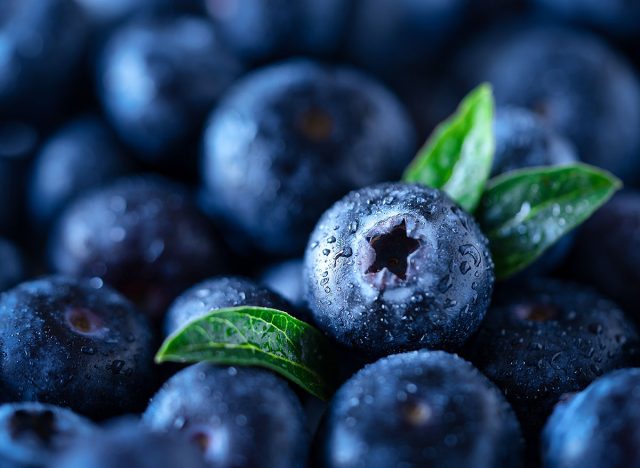
"A one-cup serving of blueberries contains 25% of the recommended daily value for vitamin C and 4 grams of dietary fiber, but only 80 calories," Allyn Wergin, RDN, tells the Mayo Clinic Health System. "Plus, blueberries are juicy fruits, which means they contain mostly water. That high water content makes them great for weight loss or maintenance because they fill you up quickly without a lot of calories."
Bananas
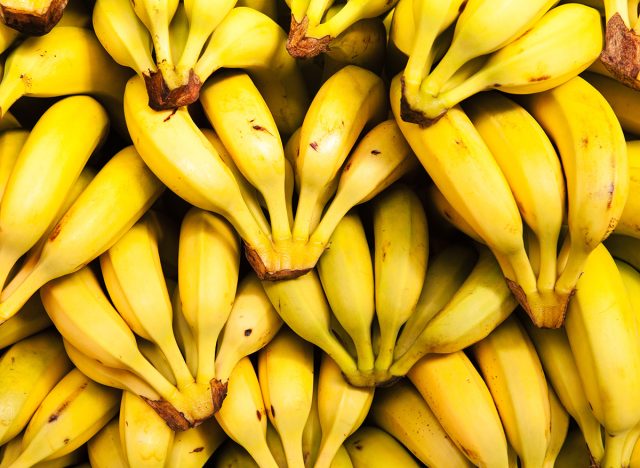
The humble banana is a great choice when cleaning up your diet. "They're full of nutrients and easy on the gut," registered dietitian Elyse Homan, RD, LD, tells the Cleveland Clinic. "Very few people have problems digesting bananas."
Avocado
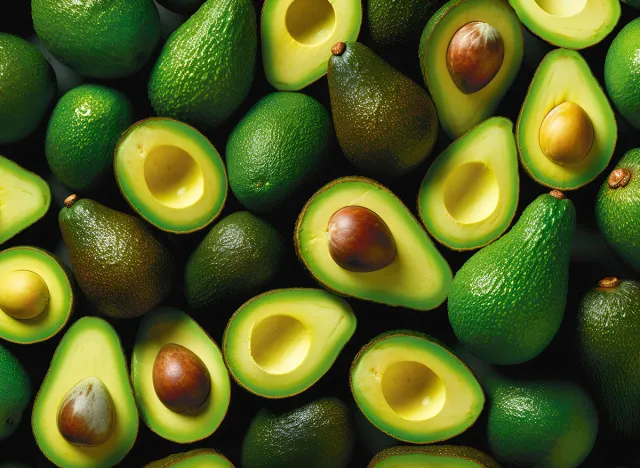
Avocados may be higher in calories than other fruits, but studies show they are very good for weight loss. "A lot of people think that because avocados are high in fat, they are fattening. But that is not necessarily so because higher fat foods help you feel full," says Dr. Ella Haddad, Loma Linda University Associate Professor of Nutrition.
RELATED: I Hit 60 and These Daily Habits Keep Me Fit and Feeling 20 Years Younger
Grapefruit
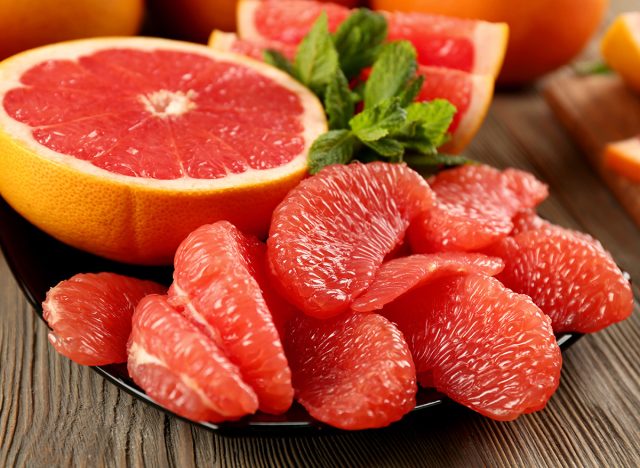
Grapefruits are associated with weight loss for good reason. "Grapefruits are popular with people trying to lose weight," says Johns Hopkins Health. "Grapefruit calories only measure about 104 for an entire fruit and can help you feel full and well hydrated."
Lemons
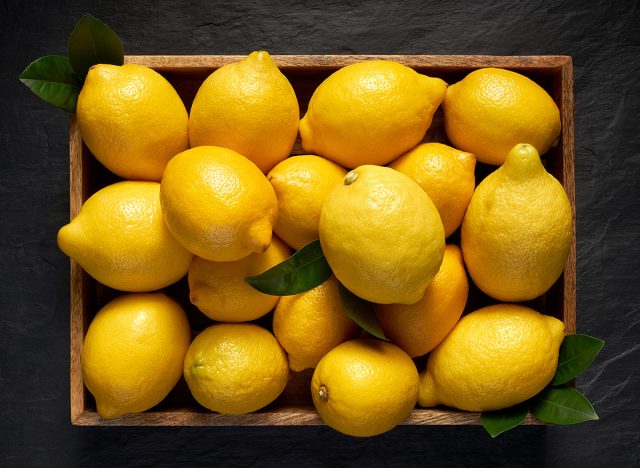
Lemons are low-calorie and full of nutrients. "We're creatures of habit," Roxanne B. Sukol, MD, MS, tells the Cleveland Clinic. "Ponder the impact of replacing your morning OJ or latte with lemon water. Not just once, but perhaps 20 times a month — and multiply that by 10 years. Your waistline will thank you."
RELATED: Top 8 Proven Habits to Boost Metabolism and Lose Weight You Should Do Every Day
Pears
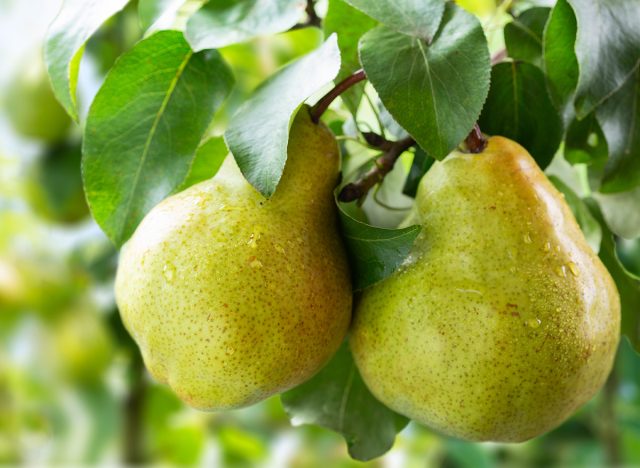
Pears are a good choice of fruit on a weight-loss diet—aside from being delicious, they are packed with nutrients. "Pears are so healthy, and most people tolerate them very well," Beth Czerwony, RD, LD, tells the Cleveland Clinic. "They're terrific for your digestion and have other impressive health benefits. They're a perfect snack if you're craving something sweet."
Watermelon
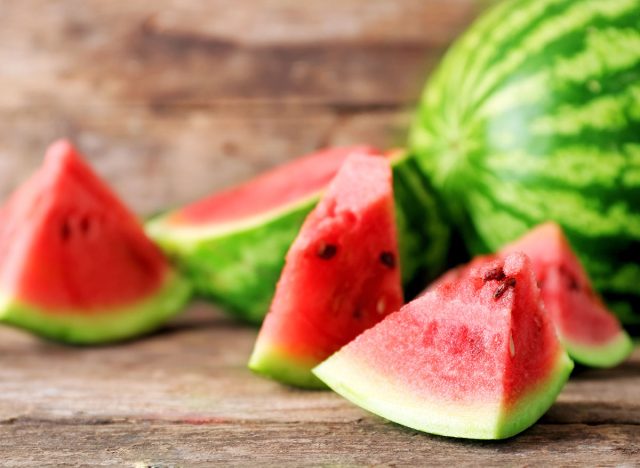
Watermelon is 90% water, making it a hydrating, low-calorie snack that encourages fat-burning. "In addition to helping the body stay hydrated, snacking on watermelon will help you feel full, so you won't have cravings between meals," Lander-Canseco says. And if you enjoyed this article, take advantage of these 15 Quick Ways to Lose Body Fat Percentage in a Week.




